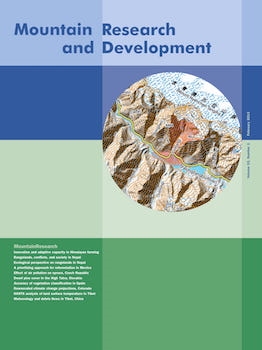Struggles for Local Democracy in the Andes by John Cameron. Boulder, Colorado: Lynne Rienner Publishers, 2010. xix + 383 pp. US$ 75.00. ISBN 978-1-935049-16-6.
By contributing to critical understanding of democratization processes at a local level in the Andes—“local” referring to a defined territory within the municipality boundaries, the smallest administrative units in Andean countries—John Cameron's Struggles for Local Democracy in the Andes is an excellent book recommended to scholars interested in democracy and rural studies.
Cameron relies on the relative power theoretical approach (Rueschemeyer et al 1992; Myers and Dietz 2002; Fox 2007) to present (un)democratization processes observable in municipalities in the Bolivian, Ecuadorian, and Peruvian Andes. The first chapter includes a review of the literature on democratization through decentralization. The next 7 chapters present the results of his ethnographic work in rural municipalities in which indigenous peasant communities predominate, concluding with an analysis of context-based democratization processes and a documented reflection on the interaction between power and institutions.
In concluding that the cases presented in his book do not represent the universe of more than 2000 rural municipalities, Cameron identifies fundamental factors that explain how formal democratization, the author's interpretation of Foucault's governmentality (Foucault 1991), takes place in the rural Andes. He identifies access to land, external interventions from nongovernmental organizations and the business sector, institutional changes in state administrations, changes in indigenous organizations, and the effects of political violence as the multiple factors that influence the establishment of local democracy in rural environments. Each case develops a prominent issue of municipal democratization according to a municipality's recent history and discusses the implications of political struggles among the multiple actors who interact at the municipality level for local development. His assessment of the outcomes of formal processes of municipal democratization in terms of real democracy allows for a critical view of the impact on the wellbeing, dignity, and political capabilities of indigenous and peasant populations.
Each chapter is valuable in its own right and can be read separately. However, to some extent, the separation acts as a caveat because the initially offered comparative view is not fully achieved. This is because the selection of factors and the depth at which each factor of democratization is addressed in each case is quite different: this narrows the comparative basis on the influence of each factor. As Cameron notes, “the central argument of the book is that municipal democracy is shaped in important ways by the historical evolution of economic, social and political power relations among local actors” (p 2); such an emphasis on the uniqueness of each locality, although insightful to understand a particular democratization process, also constrains cross-case comparative analysis. Despite this caveat and the fact that reduced or no availability of historical documentation narrows the analysis to the effects of relatively recent decentralization events, it is remarkable that the histories of segregation and exclusion from decision-making spaces are mostly associated with the local structures of unequal power relations and that these have permanently acted against 2 groups: women and the most impoverished indigenous peasants.
Cameron struggles to maintain a firm theoretical approach focused on power while acknowledging the capital importance of institutional reforms. A similar phenomenon is observable with regard to the emergence, prominence, and decay of indigenous peasant organizations in relation to the emergence of formal and informal municipal spaces of decision-making and the impact on the development of the organizations' constituents. The paradox that increasing control of municipal institutions by indigenous groups does not necessarily translate into development opportunities for the poorest and less empowered indigenous groups is essential in the book's main message; this particular area of interest for Cameron is reflected in his narratives of local struggles to gain political representation and to change power relationships among local groups and also within groups.
Whereas the tension between democratization through institutional design and professionalization of the municipal space, and democratization through change of local power structures, is acknowledged, it remains unresolved. However, Cameron's narratives show that breaking down historical feudal (hacienda) structures and increasing access of indigenous groups to education and new participatory institutions and practices reduce control of power from local elites and enable bottom-up initiatives of democratic participation. The same can be said with regard to the extended control of local public spaces of decision-making, whether municipality based or place based, by external organizations (nongovernmental organizations, religious and political parties), although Cameron cautiously suggests that political external interventions favored short-term periods of democratization.
The implicit conclusion is that the construction of municipal democracy is a process, with no patterns or absolute answers in terms of the extent to which each factor contributes positively or negatively. Despite reflecting the reality of rural municipalities and the author's ability to portray it, such a conclusion complicates a full understanding of how democracy can be achieved in the rural space beyond the municipality boundaries. For this purpose, discussion on some analytical categories, such as the indigenous control of the municipal space, class, peasantry, and ethnicity, needs to be explicit. Discourse related to these categories is certainly at the core of the study of democracy in the Andes; Struggles for Local Democracy in the Andes would benefit more from clearer definitions on the aforementioned categories.
What is certainly distinctive is that Cameron's work opens many avenues for new research on local democracies in the Andes, particularly around relationships between municipal democratization and wellbeing, the symbolic and material meanings of decentralization, the new forms of representation and the presence of indigenous populations in political spaces, and the linkages of all of these with institutional and policy trends at national and global scales. For new research, producing reliable data at microlevels needed to assess the impact of institutional and policy changes on social change must be a priority.





